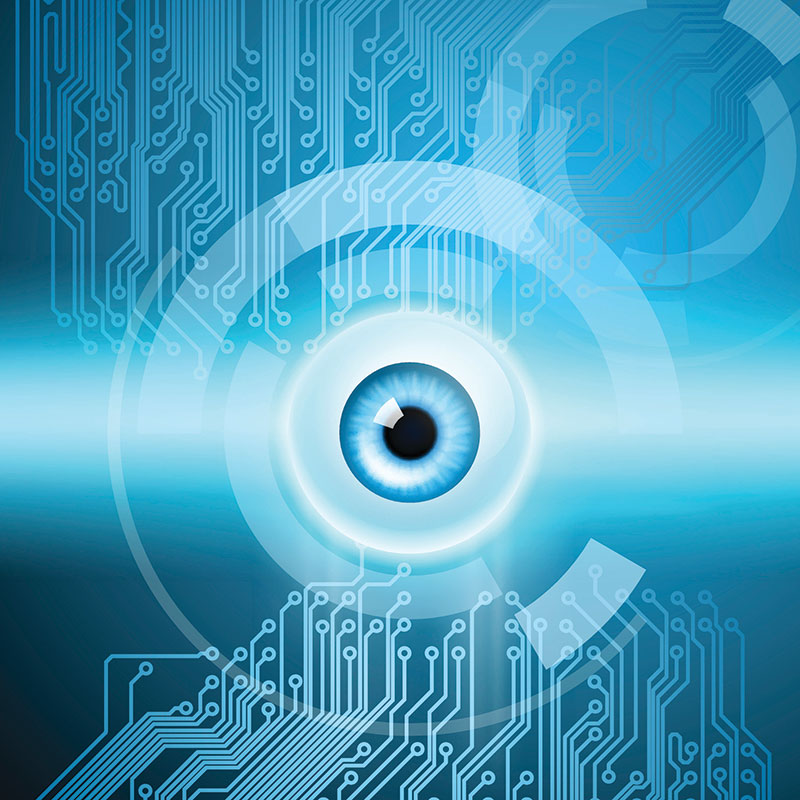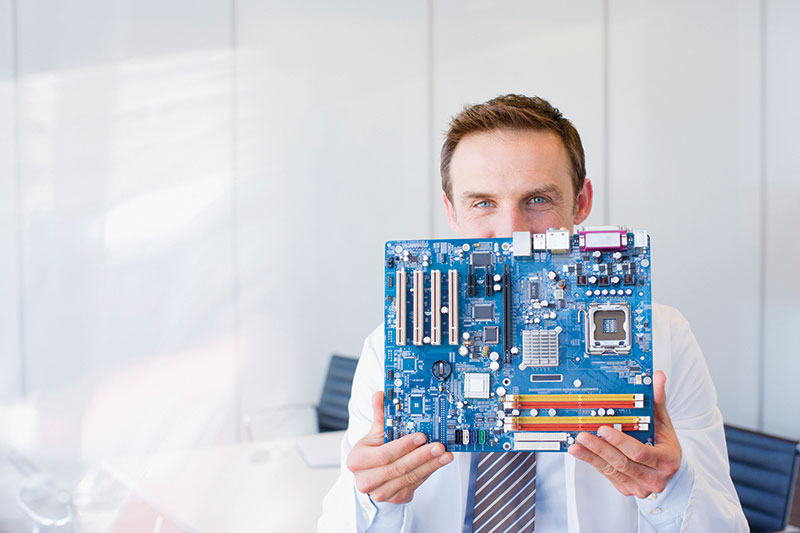Flexibility, preparation and passion are an effective combination.
Every step taken during the printed circuit board (PCB) design process is taken purposefully. This article describes seven habits that highly efficient PCB designers take as they study, prepare, visualize, strategize and complete PCB designs.
1. Pay attention to details. From creating the schematic symbols to polishing the layout for fabrication, assembly and test, even the smallest missed detail can make or break a PCB design. Efficient designers make it a point to understand every aspect of the design flow, and when in doubt, they check things out. Preparation is key. It starts long before the PCB layout tool is launched. From building symbols and component land patterns from scratch, to obtaining them from tool libraries or online resources, designers check them out. Why? Because they can’t afford for them to be incorrect, no matter the source, since a single incorrect symbol or land pattern alone can result in a costly board re-spin.
Reviewing the design’s bill-of-materials (BoM) and component datasheets to verify the component dimensions and pin-out is time well spent. Whether it’s adding stitching vias to connect power or ground fills and planes or additional silkscreen notations, effective PCB designers understand all the electrical design aspects and requirements necessary for an optimal design.
2. Study, plan, strategize, execute and be prepared to regroup quickly. Efficient PCB designers must become familiar with the schematic and think multiple steps ahead. Understanding the design’s schematic enables the designer to expedite placement. For example, defining groups or rooms of associated components helps expedite component placement. Designers should understand the applications for discrete components like decoupling capacitors and bypass resistors, why and where they are needed, their proximity to the component leads and even when necessary on unused pins.
Efficient PCB designers also know the value of setting up the layout session properly and are resourceful. They know how to apply design constraints and rules that ensure they are followed during placement and interactive and autorouting phases. They may develop route studies and strategies that prioritize nets to ensure that even the most extensive rules-driven designs are accomplished. Let’s face it, changes happen. There can be a variety of reasons for design updates: perhaps a part is no longer available, or a component like an FPGA requires a new pin-out. It is not uncommon for a designer to get an updated netlist, or perhaps several updates, during layout. The ability to regroup and adjust quickly is critical for PCB designer efficiency, especially if the design’s release schedule is time-sensitive.
3. Visualization. Component placement is a critical step and sets the stage for successful layout. Component orientation, top or solder placement, spacing that avoids shadowing and ensures optimal solderability, and testing are just a few of the details designers are aware of, plan for and visualize. Factors such as aligning components and breakout vias help ensure routing lanes are not blocked. Efficient PCB designers can study a ratsnest of connections and begin to visualize and plan a routing strategy before the first trace is connected. They know what should be routed manually and what can be autorouted. Efficient PCB designers may even use specific techniques to steer routing by placing route boundaries or temporary fences and keep-out areas.

Figure 1. “Creativity is intelligence having fun!” – Albert Einstein
Efficient PCB designers visualize the design not only from a layout perspective but also from a manufacturing perspective. They are aware fabricators have their own internal processes and design rule checks. Details such as knowing which components require additional placement room during layout, perhaps driven with placement boundaries, for example, can minimize or totally eliminate rework time after boards are fabricated.
4. Value working with and consulting with peers. As singer Vanilla Ice raps in “Ice Ice Baby,” “stop, collaborate and listen.” Efficient PCB designers don’t work in a vacuum. They understand the value of collaboration.
Early on, for example, they work closely with mechanical design teams to ensure the design’s board outline, mounting holes and the locations of all physical interfaces, such as connectors, LEDs, displays, etc., are adhered to. And when identified, they provide valuable feedback to mechanical teams that can improve the design. They embrace ECAD-MCAD collaboration and keep the end-product in mind throughout the PCB layout phase.
Understanding the design requirements such as design rules and signal integrity constraints that drive connectivity is a must. The design process may include specific SI engineers that use models, run simulations and apply strict routing and timing rules, such as defining net topologies and differential pairs with minimum and maximum trace lengths, matched lengths, maximum separation, etc.

Figure 2. “None of us is as smart as all of us.” – Ken Blanchard
Collaborating is essential to PCB design success. Depending on the size of the business and complexity of design, collaborating can include component and model librarians, EMC, thermal, QC and NPI engineers, even board fabricators. Even the best PCB designers understand the value of peer reviews. Some designers can be so involved, they may overlook something as simple as a missing or misplaced reference designator, or nonfunctional pads on internal layers were not removed.
5. Strive for perfection. Do you remember a class in school where a score of 95% was an “A” grade? Well, that’s certainly not “passing” in PCB design. In fact, even the smallest error such as an incorrect pad size or a single trace too close to a mounting hole can result in a respin. Efficient PCB designers do everything they can to achieve design perfection. From online design rule checks (DRC) and designing for manufacturing and assembly (DfMA) checks, every effort is made to ensure the design work is accurate.

Figure 3. “Pleasure in the job puts perfection in the work.” – Aristotle
Design reviews are critical to eliminate ambiguity between design stakeholders. Effective PCB designers often use specific post-design programs that combine capabilities of design for manufacture (DfM) and new product introduction (NPI). These tools ensure a smooth transition to fabrication, assembly and test from the PCB design environment.
6. Continue to learn. All PCB design steps, processes and procedures referenced here are derived from education, training and hands-on experience. First and foremost, a strong foundation is absolutely essential to being a PCB designer, especially with the pace with which new components, technologies and processes are evolving. Continuing education is a must in electronic product design. Continuing education includes keeping up with the latest industry standards, including ones from IPC, ANSI, the military, etc., as well as PCB fabrication and assembly processes. PCB designers contend with a constant stream of new and improved components, packages, fabrication and manufacturing, pre- and post-test and assembly processes as well.
Effective PCB designers understand they are not an island, but rather are part of a greater community of designers with a common goal. They subscribe to publications like PCD&F and Circuits Assembly, are either members of or regularly attend IPC Designers Council chapter meetings and conferences, and may even present papers to peers at PCB conferences like PCB West. Many designers even seek industry credentials or certifications through training and testing, like IPC’s Certified Interconnect Designer (CID) programs.
7. Their designs reflect their passion. Insomuch as canvas is the medium of an artist, PC monitors are the virtual canvas for PCB designers. In fact, give an identical design database to 10 different PCB designers, and the finished result can look quite different. Said differences may be subtle or visibly noticeable, as each PCB designer has their own unique design style in which items that aren’t immutable or fixed can be tailored and custom.
Rarely, for example, does a PCB designer kick-off an autorouter and is 100% percent satisfied with the finished result. Typically, designers will choose to hand-route physical interface connections or sections of highly constrained busses like DDR. Nets with T-points, clocks, TX and RX traces, RF circuitry, etc., are also considered for partial or complete pre-routing. Trace characteristics such as corner chamfers and tuning (rule-based) are just some of the other design elements that may vary from designer to designer.
Conclusion
I referred to PCB design as a complex puzzle. It starts with a design envelope that provides the frame, a set of components to be logically and strategically placed, and a schematic diagram with guides and rules that represent how components are interconnected. There is, however, no picture on the top of a box of the finished product, since every placed component, trace, pad and other feature is by design. Developing design habits that expedite design completion, improve design quality and enhance productivity are instrumental to highly efficient PCB design.
John McMillan is product marketing manager at Mentor Graphics (mentor.com); This email address is being protected from spambots. You need JavaScript enabled to view it..
















